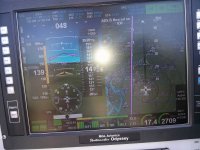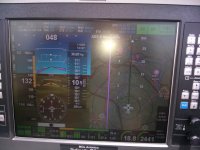In my case it would likely be an RV 9 (o-320), but anyone with experience in the other 2-seat RVs please chime in. But when cruising above 10k feet, maybe the lower teens, will a fixed-pitch prop still perform just fine in comparison to a CS prop, especially if I’m flying solo? I imagine if I were carrying a passenger, I wouldn’t bother climbing to hypoxia levels.
I haven’t had yet had the pleasure of flying in an RV, but when/if I ever get to own one, it’ll be purely for fun and not mission-related (traveling for work or to see the in-laws 3 times a month, etc.)., so I’m wondering if the extra costs of a CS prop simply wouldn’t be necessary, especially as I’d be based at a low-elevation airport with a mile-long paved runway.
I was reading through some old threads, and I recall someone recommending going with a fixed-pitch prop and “using the extra money on nicer avionics”, bput I thought I’d ask just how much of a difference would it make?
I haven’t had yet had the pleasure of flying in an RV, but when/if I ever get to own one, it’ll be purely for fun and not mission-related (traveling for work or to see the in-laws 3 times a month, etc.)., so I’m wondering if the extra costs of a CS prop simply wouldn’t be necessary, especially as I’d be based at a low-elevation airport with a mile-long paved runway.
I was reading through some old threads, and I recall someone recommending going with a fixed-pitch prop and “using the extra money on nicer avionics”, bput I thought I’d ask just how much of a difference would it make?






